Last week I returned from a week on the island of Kos, the birth place of Hippocrates. It turns out it was just what the doctor ordered. If by doctor one means healer, not a patronising, narcissistic sociopath in a starched white coat.
I was desperate to get away from a nation of fawning amnesiacs who had just swooned over the crowning of the ill-tempered, jug-eared, sausage-fingered, jab-pushing, globalist nonce protector.
Of course getting ‘away’ sounds easier than it actually is. I had to muster up the mental energy to make the decision to go anywhere. The black dog was happily chewing a bone in his bean bag. But I knew in my gut I had to be elsewhere just for a short time, so I got on the EasyJet app and booked it all at 4am.
A couple of days later I landed in Kos.
I stayed in a modern hotel about 30 minutes walk from the centre of Kos. On the first morning, I threw on a sleeveless dress and strolled into town. Although it’s a pleasant walk, be prepared to dodge the Tour de France enthusiasts in the ubiquitous cycle lanes (Sadiq Khan would bloody love it). Once in the centre, I came across a little park with a bronze statue of Hippocrates surrounded by a couple of young students, and a mother and toddler, tiny arms outstretched. Hippocrates is holding a scroll in his right hand. Just under the mother with her child, the Hippocratic Oath 4 is written on a tablet in Greek and English.
‘I will use treatment to help the sick according to my ability and judgement but never with a view to injury and wrongdoing’.
I sat on a bench nearby and watched as a family of very loud Brits took a photograph of their child sitting on the high, octagonal plinth. I’m not even sure they knew what the statue was, and why it resonates so strongly, particularly now.
That same day I popped into the Church of Agia Paraskevi, an impressive Orthodox church that was damaged quite badly in the earthquake that hit Kos in 2017.
I love Orthodox churches because they are full of exquisite icons and the faint smell of incense. You can almost hear the hum of the close harmony that epitomises the mystical chants. On a practical level, churches are also a welcome escape from the heat of the noonday sun. I sat and contemplated in silence. I prayed as always for all those who have departed this mortal coil, and for my sister, my nephews, and the precious Substack family - and especially those who are are suffering with a serious illness, like our friend Lisa.
Swimming in the pool, guzzling grilled sea bass, and basking like a seal in the sun was obviously wonderful, but as ever the real highlight was meeting such good, interesting people on my journey.
One evening, at dinner in the hotel, I got chatting to one of the staff, Nektaria. I told her I was travelling alone, and wanted to see more of the island away from the tourists. She directed me to Instagram and showed me a small company called Kos Awaits run by husband and wife team Dimitris and Dionysia.
My first outing was to the Asklepieion, one of the first treatment temples. An Asklepieion is named after Asklepius, the Greek God of medicine. He was the son of Apollo and Coronis, a mortal woman. Just writing the word Coronis makes me shudder.
We got to the site at around 6.30pm. Despite being free that day, it was virtually empty. Dionysia and I talked as if we had known each other for years. As we meandered slowly through the sacred ruins, she told me how when she was going into labour with her beautiful daughter Ariadne (now 16 months old), the hospital made her wait outside on a freezing cold December night while she took a ‘Covid’ test. She said it was the most terrifying ordeal of her life. Fucking bastards.
The Asklepieion is in an idyllic elevated clearing, surrounded by forest, with views across to Turkey. It was one of the most transcendent experiences of my life. As I put my hands deliberately on the cold, stone surfaces overgrown with spring grass, I imagined all the souls who built this place, and those who went there to be healed with sleep, diet, bathing, dream therapy, prayer, and fresh air.
I was reminded once more how morally unspeakable the last three or so years have been. In fact, for decades human beings have been reduced to meaningless body parts by so-called ‘doctors’.
That has to stop.
My next adventure was a hike through the countryside of Messaria, in the South East of Kos. I was accompanied by Dimitris, and a wonderful older gentleman called Euprepeios, which means ‘man of good repute’ in Greek. His kind, pale blue eyes reminded me of my Welsh gramps. The three of us strolled along a dusty forest track, the sun-speckled, emerald doily of leaves sheltering us from the mid morning sun. Dimtris is a philosophy graduate and he’s incredibly smart. We discussed everything from da ‘Covid’ barbarity, to whether we’d rather go to the pub with Plato or Aristotle. To be honest, I could have done that all day. I might suggest Philosophy hikes! Every so often we would stand completely still in silence, listening to the almost unbearably sweet bird song, as it echoed around us. As we crossed through an olive grove, I told Dimitris and our reputable friend that I could almost see Pan, trotting through the long blades of corn, playing his pipes for the robed listeners ushering in the glorious spring.
I’ve come to realise that the human world we inhabit is a heady mix of the secular and the sacred, and finding a happy balance is perhaps the secret to a more meaningful life.
The first Orthodox church we came to was the tiny Santa Marina. It’s so small that we went in one by one. I didn’t take photos of the interior. I felt moved to tears. As I stood alone in the tiny room, I could almost hear the echo of human souls and I knew this was a very sacred, private place. I said a prayer for Father Aleksandr, and kissed the icon of Christ near the small altar.
We continued our walk through the silver olive trees, brushing past long ears of corn and came to the next church, Santa Merkourios. The guide explained that this was a place where people come to pray for the deaf. You can see the little metal prayer sheets below with ears carved into them. All the icons have an obvious ear depicted in the art.
We walked on to a couple more churches, Santa Dimitrios, where New Zealanders were sheltered during the Second World War, and then lastly Santa Georgios, which was sadly shut!
On our way back down a stony track, we came across a lone poppy, and I said: ‘that’s how so many of us have felt during the past three years.’ Then we saw a few more poppies, and Dimitris said: ‘look, there are other poppies calling out’.
After the hike, I had the honour of meeting Dimitris and Dionysia’s adorable daughter Ariadne. In Greek, Ariadne means ‘most holy’. In Greek mythology Ariadne helped Theseus to escape the Minotaur by guiding him through the labyrinth. She was the Goddess of Paths, and Labyrinths. How fitting then that I should meet her on my journey to Kos.
I would like to end this piece by simply thanking my dearest Koan friends for guiding me out of the darkest maze, into the sunlight.
I shall return.





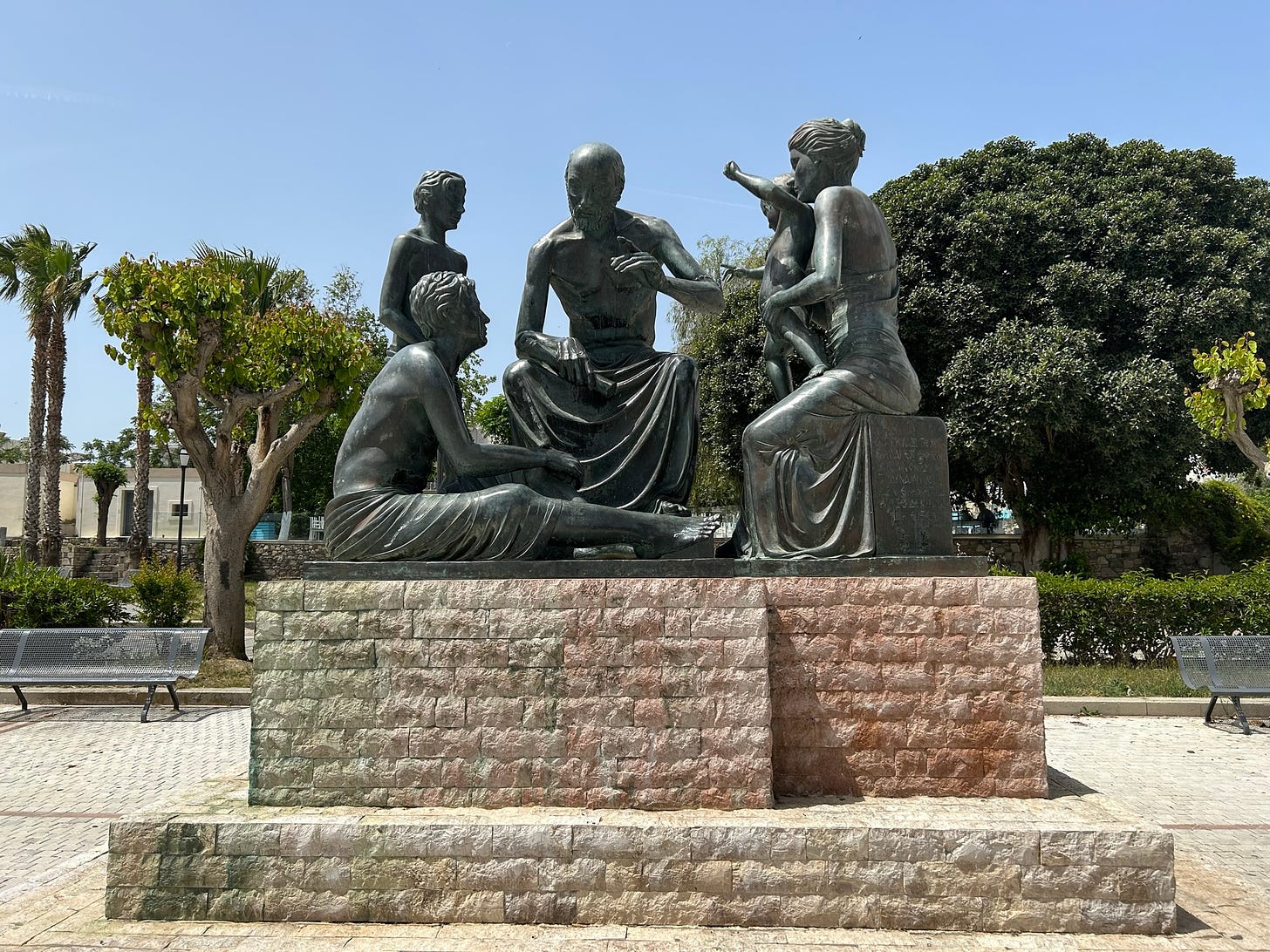
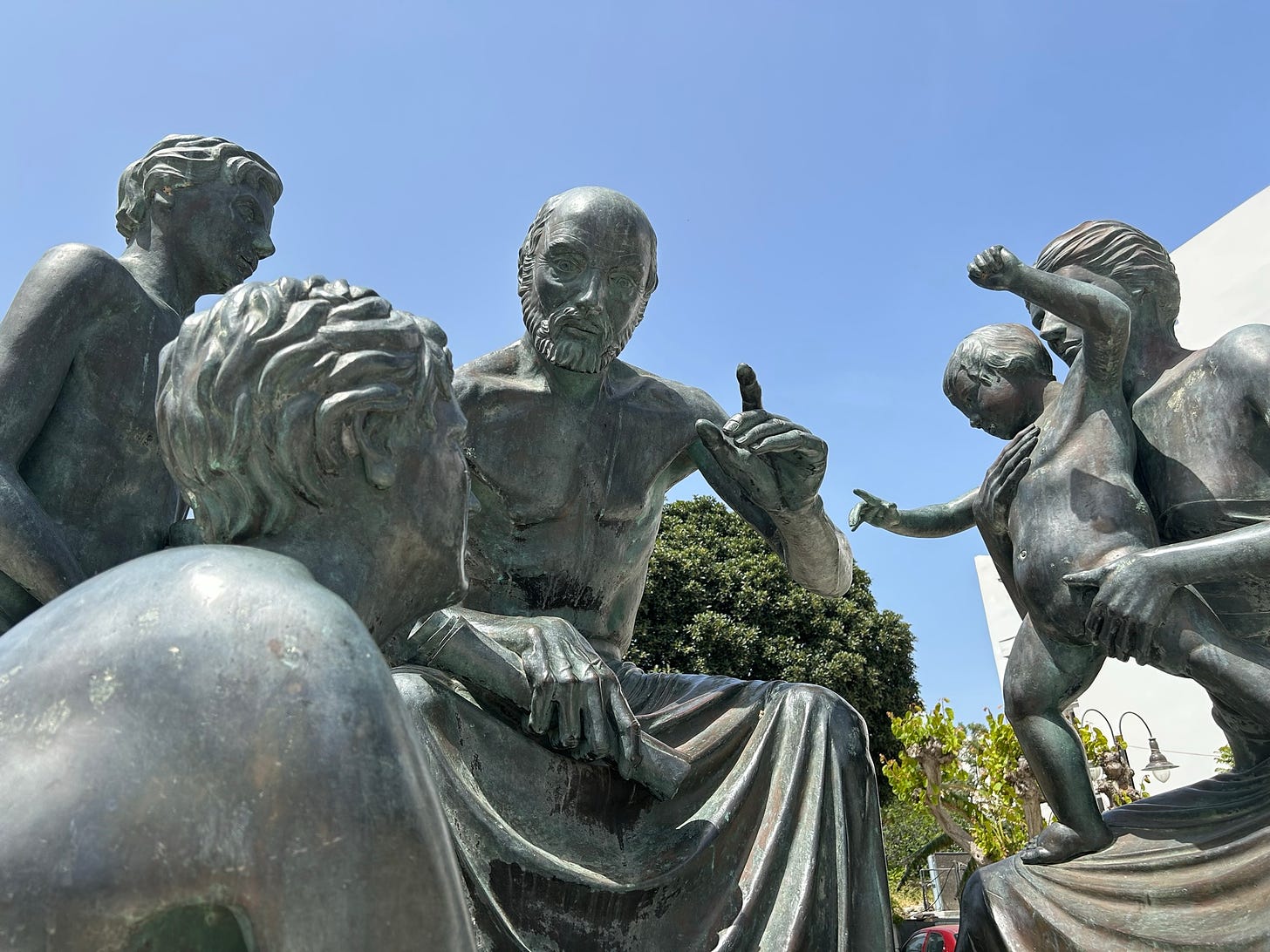
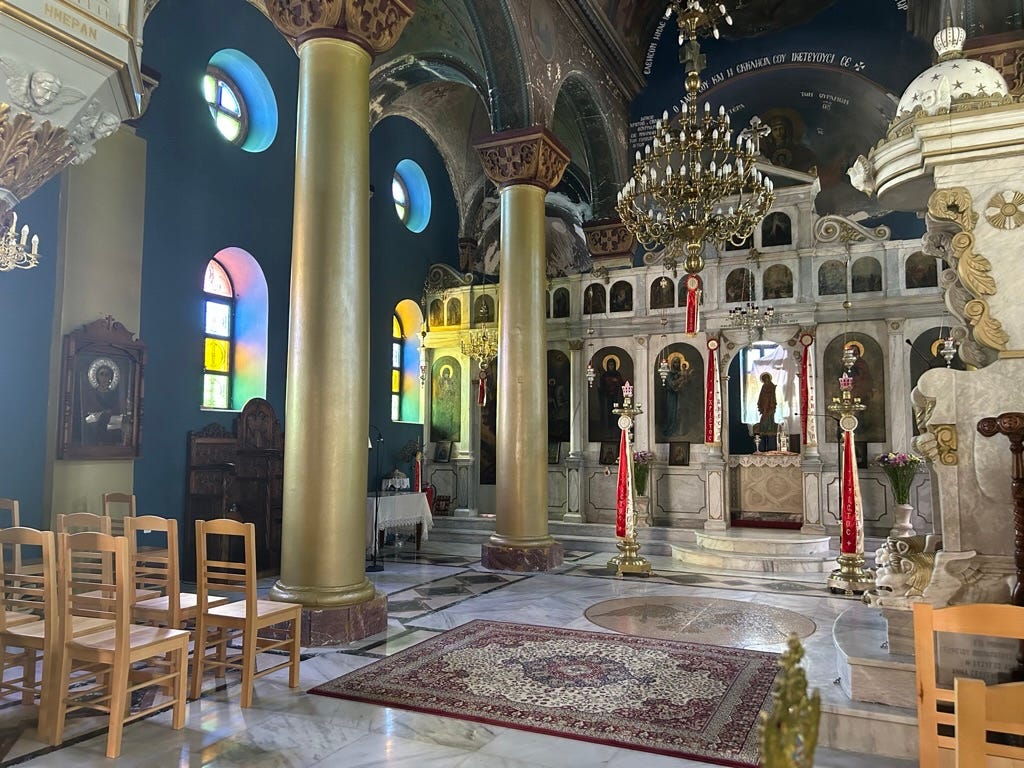
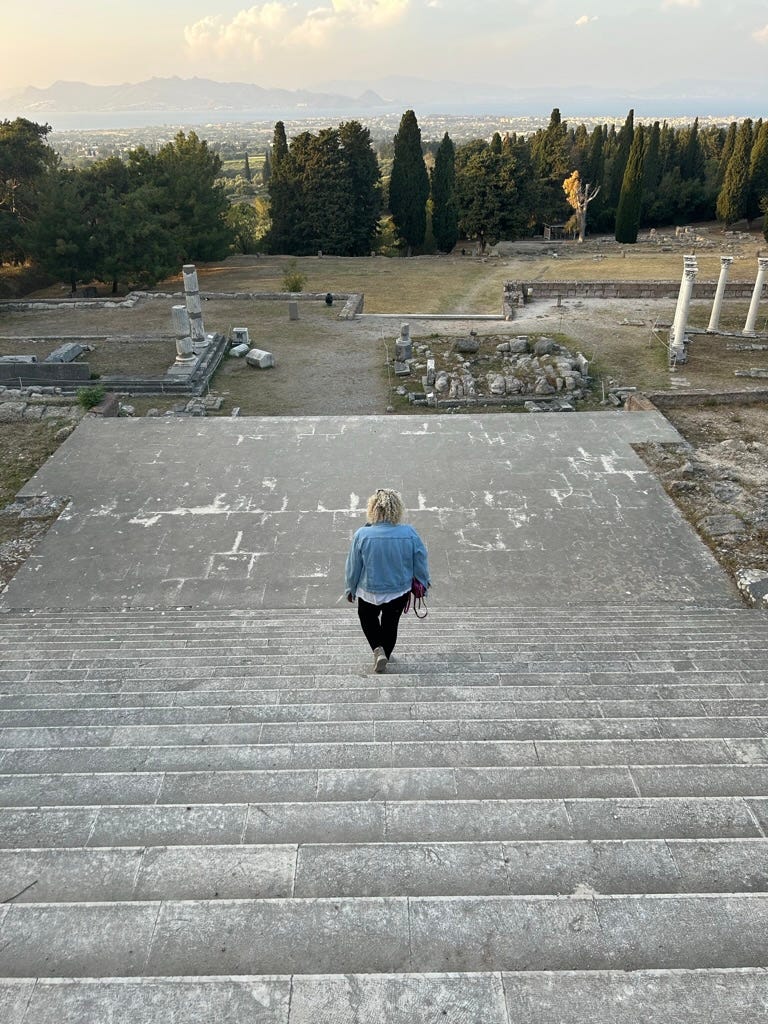

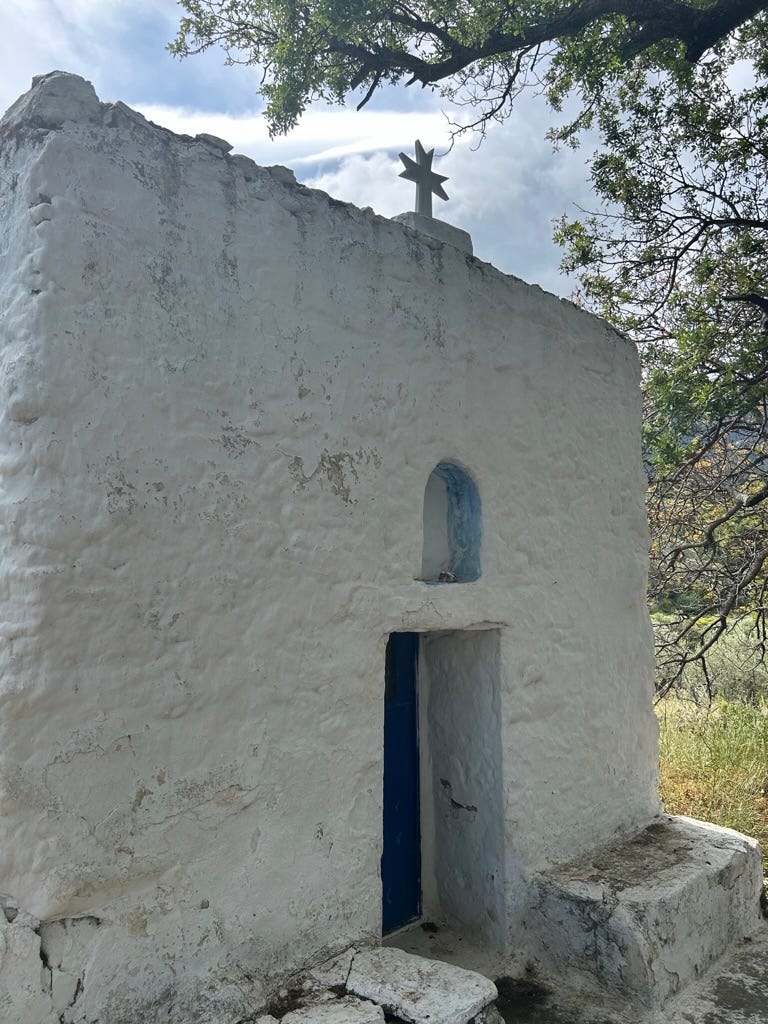

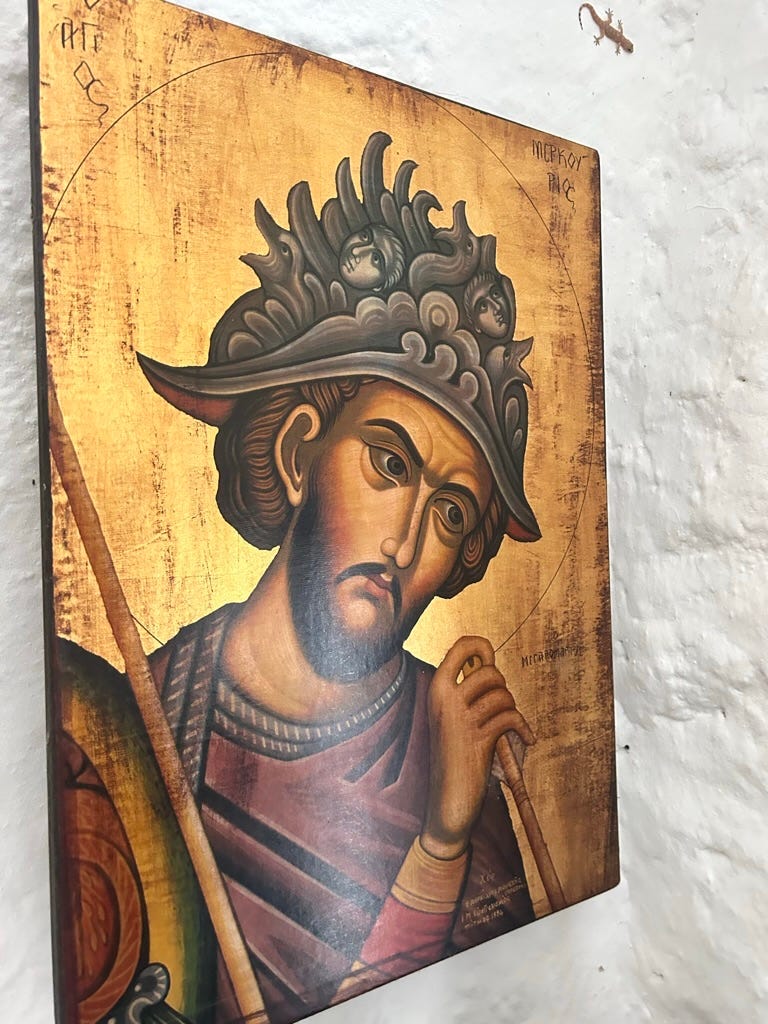
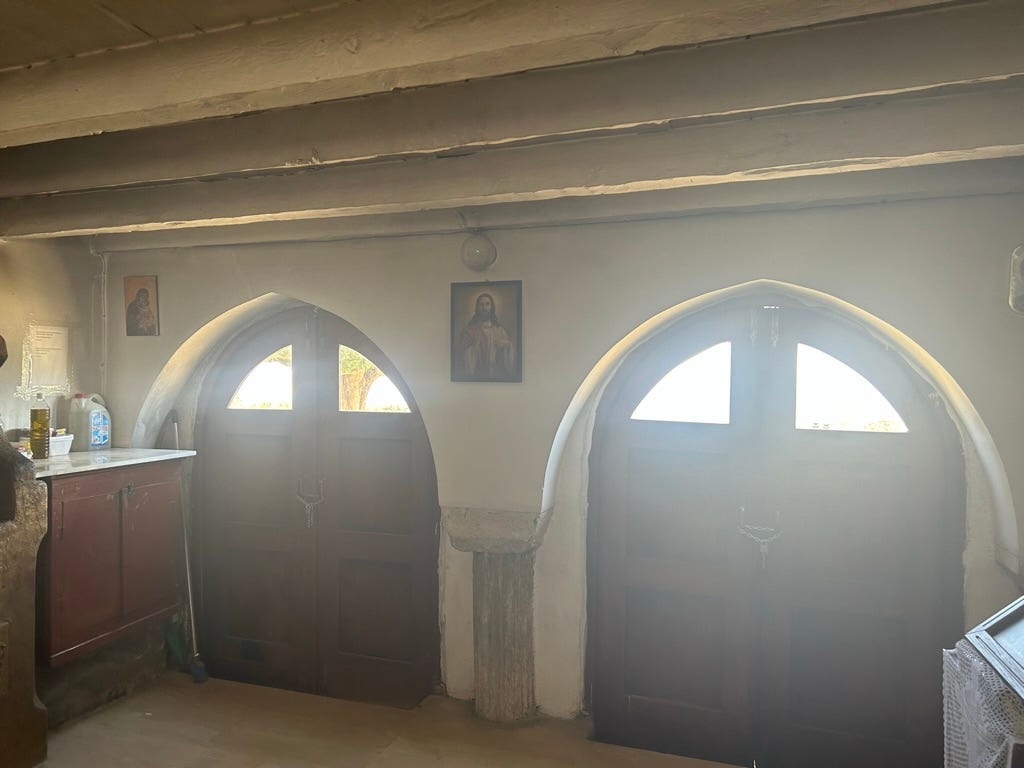
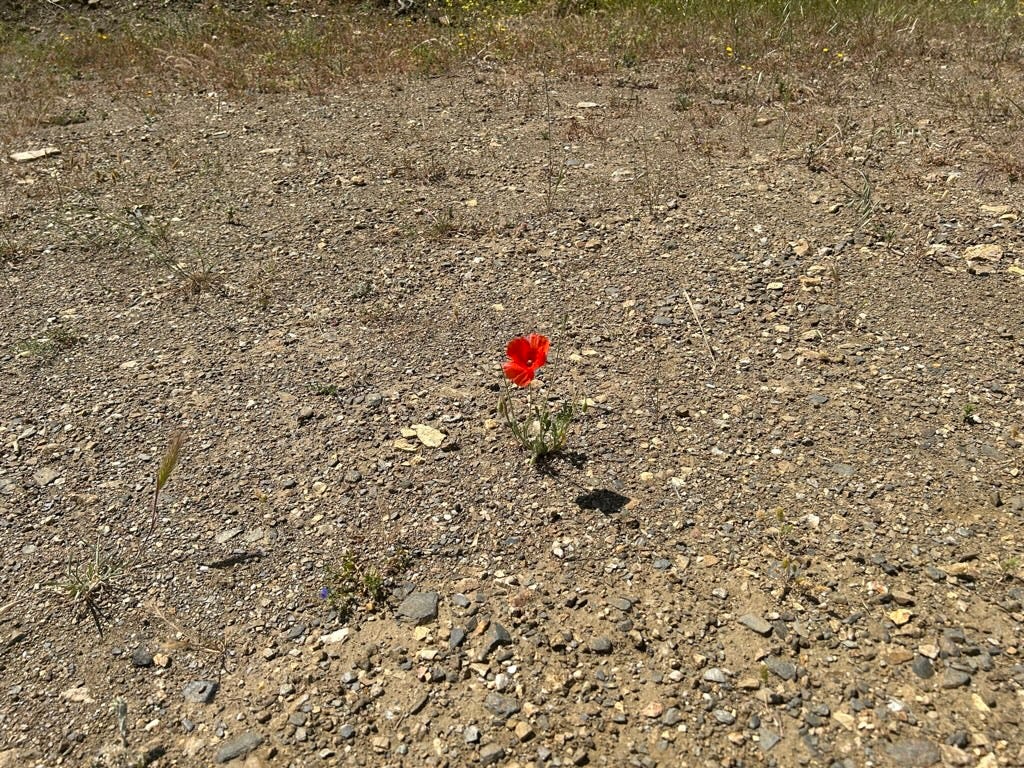
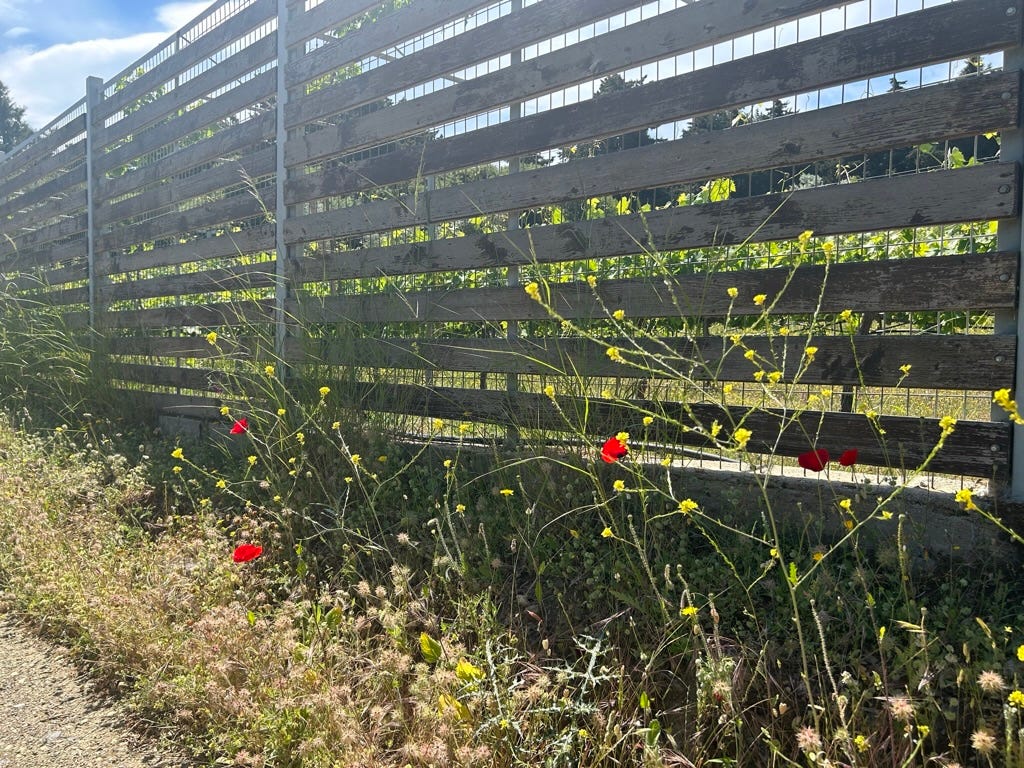
“we came across a lone poppy and I said: ‘that’s how so many of us have felt during the past three years.’ Then we saw a few more poppies, and Dimitris said: ‘look, there are other poppies calling out’.”
This almost brings me to tears Abi.
God love you.
Utterly wonderful, what a journey, the photos of the lone poppy.... just wow!😢😢
The lovely people you met, I believe you were meant to.
Just beautiful 😍